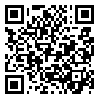BibTeX | RIS | EndNote | Medlars | ProCite | Reference Manager | RefWorks
Send citation to:
URL: http://hayat.tums.ac.ir/article-1-81-en.html
2- MSc. in Nursing, Dept. of Medical and Surgical Nursing, School of Nursing and Midwifery, Tehran University of Medical Sciences, Tehran, Iran
3- MSc. in Biostatistics, School of Nursing and Midwifery, Tehran University of Medical Sciences, Tehran, Iran
4- Assistant Professor, Dept. of Public Health Nursing, School of Nursing and Midwifery, Tehran University of Medical Sciences, Tehran, Iran
5- Assistant Professor, Dept. of Heart, School of Medicine, Tehran University of Medical Sciences, Tehran, Iran
Background & Aim: Diet adherence is a major issue in cardiovascular diseases control. Patient education could be a valuable strategy for promoting diet adherence. The aim of this study was to compare the effects of computer-assisted vs. face to face education on dietary adherence among patients with myocardial infarction.
Methods & Materials: In this experimental study, 117 patients with the first acute myocardial infarction were selected via a convenience sampling. The participants were randomly allocated into three groups. Patients in the face to face group (n=43) received an education about diet in two two-day sessions. The computer-assisted education group (n=33) received the same educational plan provided by computer software containing audio, text, images and animations at home. The control group (n=41) received their usual care. Adherence to dietary regimen was assessed three months after the educations.
Results: There were not significant association between the three groups in terms of demographic characteristics and disease history. There were no significant different in unhealthy diet adherence between the three groups. There were not significant differences in healthy diet between the computer-assisted and face to face education groups. The computer-assisted education group had significantly better adherence with the consumed amount of fats (P=0.01), useful meat substitutes (P=0.01), and other foods (P=0.012) than the control group. In addition, the face to face education group had significantly greater adherence scores with consuming meat substitutes (P=0.04), and fats (P=0.04) than the control group.
Conclusion: Both computer-assisted and face to face educational strategies had positive effects on improving adherence following myocardial infarction.
| Rights and permissions | |
 |
This work is licensed under a Creative Commons Attribution-NonCommercial 4.0 International License. |





